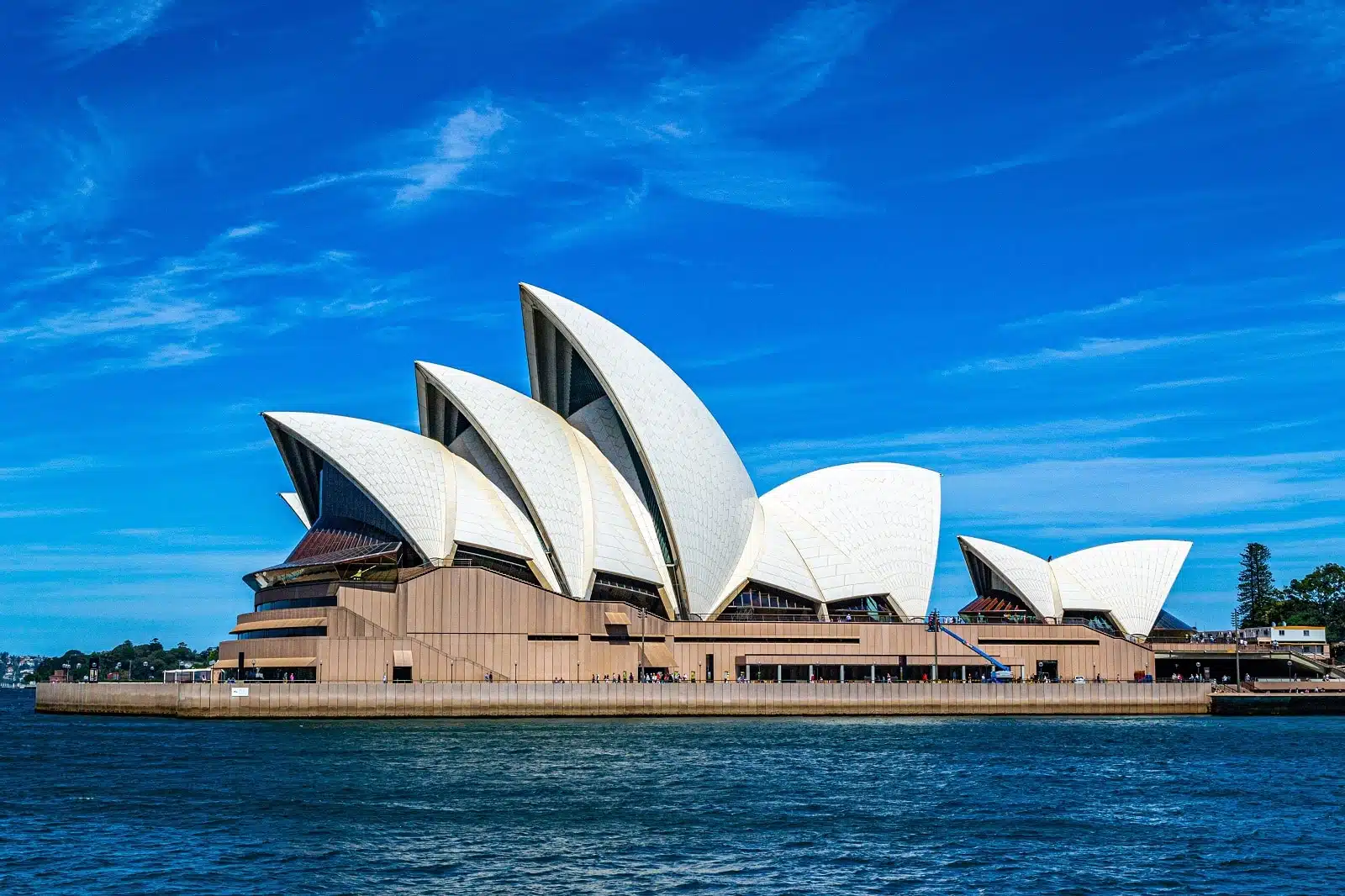Australia, a land of stark contrasts and breathtaking beauty, offers an array of landscapes, from arid deserts to lush rainforests and pristine beaches. This guide explores 15 of Australia’s most diverse and captivating destinations, each offering a unique glimpse into the country’s natural wonders and cultural richness.
Great Barrier Reef, Queensland
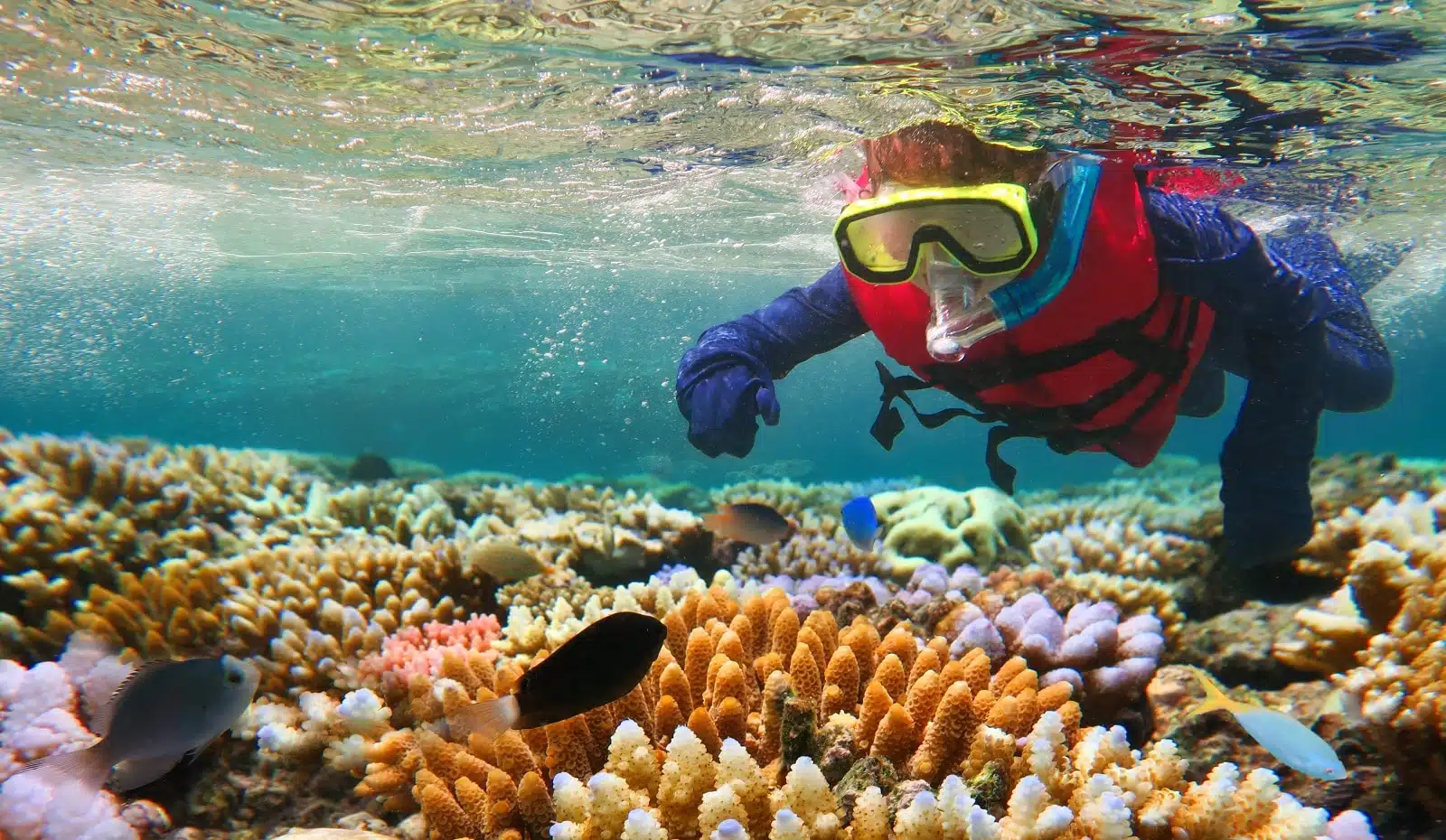
Image Credit: Shutterstock / ChameleonsEye
The Great Barrier Reef, the world’s largest coral reef system, is a kaleidoscope of marine life and vibrant corals. Stretching over 2,300 kilometers along the Queensland coast, it provides unparalleled opportunities for snorkeling and diving. Visitors can explore the reef’s diverse ecosystems, home to thousands of species of fish, mollusks, sharks, and turtles. The reef is also dotted with picturesque islands, including the Whitsundays, offering idyllic beaches and luxury resorts. The Great Barrier Reef is not just a natural wonder; it’s a vital ecosystem and a testament to the beauty of the underwater world.
Insider’s Tip
Opt for a live-aboard dive trip for a comprehensive reef experience.
When to Travel
June to October for the best visibility and weather.
How to Get There
Fly to Cairns or Townsville and join a reef tour or cruise.
Uluru-Kata Tjuta National Park, Northern Territory
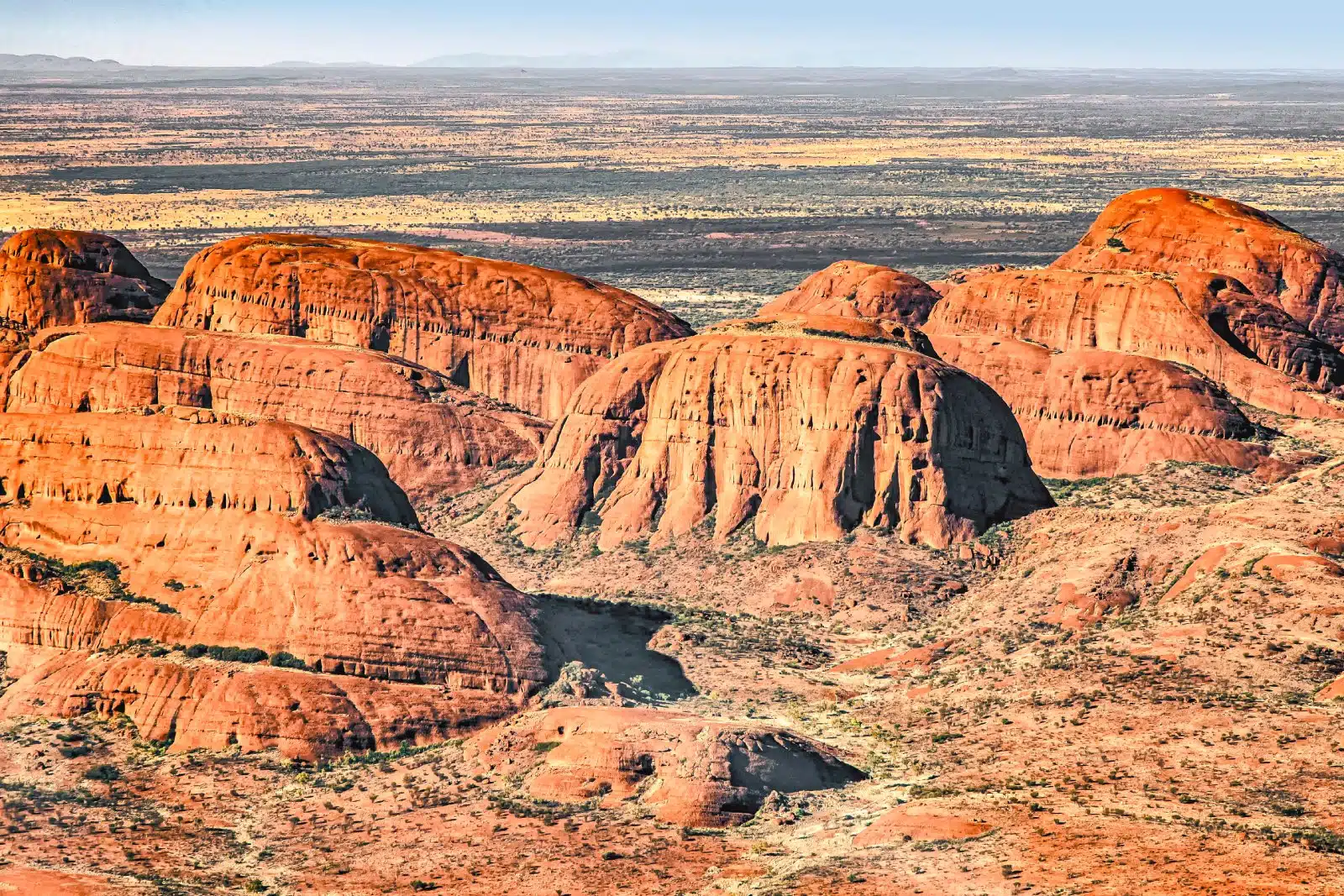
Image Credit: Shutterstock / wiesdie
Uluru, formerly known as Ayers Rock, is a massive sandstone monolith in the heart of the Australian Outback. Together with the Kata Tjuta (The Olgas) formations, it forms the Uluru-Kata Tjuta National Park, a place of deep cultural significance to the Anangu, the traditional landowners. The park offers walks around Uluru and Kata Tjuta, providing a close-up view of these geological wonders and an insight into the Aboriginal culture. The changing colors of Uluru at sunrise and sunset are a spectacular sight, showcasing the natural beauty of the Australian desert.
Insider’s Tip
Take a guided tour to learn about the Anangu culture and the area’s ecology.
When to Travel
May to September for cooler temperatures.
How to Get There
Fly to Ayers Rock Airport or Alice Springs and drive to the national park.
The Daintree Rainforest, Queensland
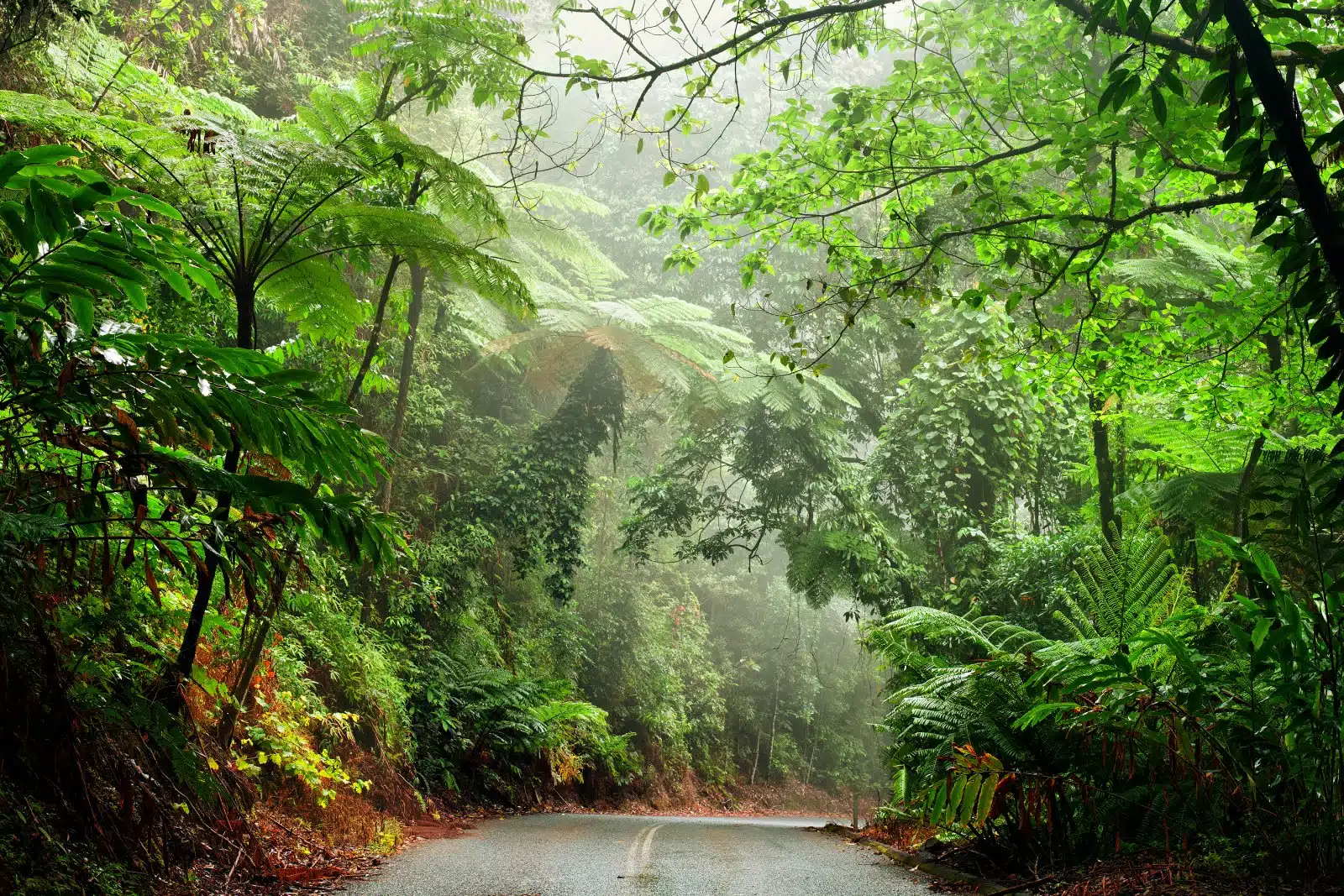
Image Credit: Shutterstock / AustralianCamera
The Daintree Rainforest, part of the Wet Tropics of Queensland, is one of the oldest rainforests in the world. This UNESCO World Heritage site is a haven for biodiversity, with a vast array of flora and fauna, including many rare and endangered species. The rainforest meets the Great Barrier Reef at Cape Tribulation, offering a unique combination of two diverse ecosystems. Visitors can explore the rainforest through guided walks, canopy tours, and river cruises, experiencing the lush vegetation and wildlife, including cassowaries and crocodiles.
Insider’s Tip
Stay in an eco-lodge for an immersive rainforest experience.
When to Travel
May to September for drier weather and fewer mosquitoes.
How to Get There
Fly to Cairns and drive north to the Daintree region.
The Kimberley, Western Australia

Image Credit: Shutterstock / robert mcgillivray
The Kimberley region in Western Australia is a vast wilderness area known for its rugged landscapes, ancient gorges, and Aboriginal rock art. Highlights include the Bungle Bungle Range in Purnululu National Park, the stunning waterfalls of Mitchell Plateau, and the horizontal waterfalls at Talbot Bay. The Kimberley offers a true off-the-beaten-path adventure, with opportunities for 4WD tours, river cruises, and scenic flights. The region’s rich Aboriginal heritage adds a cultural dimension to its natural beauty.
Insider’s Tip
Take a scenic flight over the Bungle Bungle Range for a spectacular aerial view.
When to Travel
May to October for the dry season and accessible roads.
How to Get There
Fly to Broome or Kununurra and join a tour or rent a 4WD vehicle.
The Twelve Apostles, Victoria
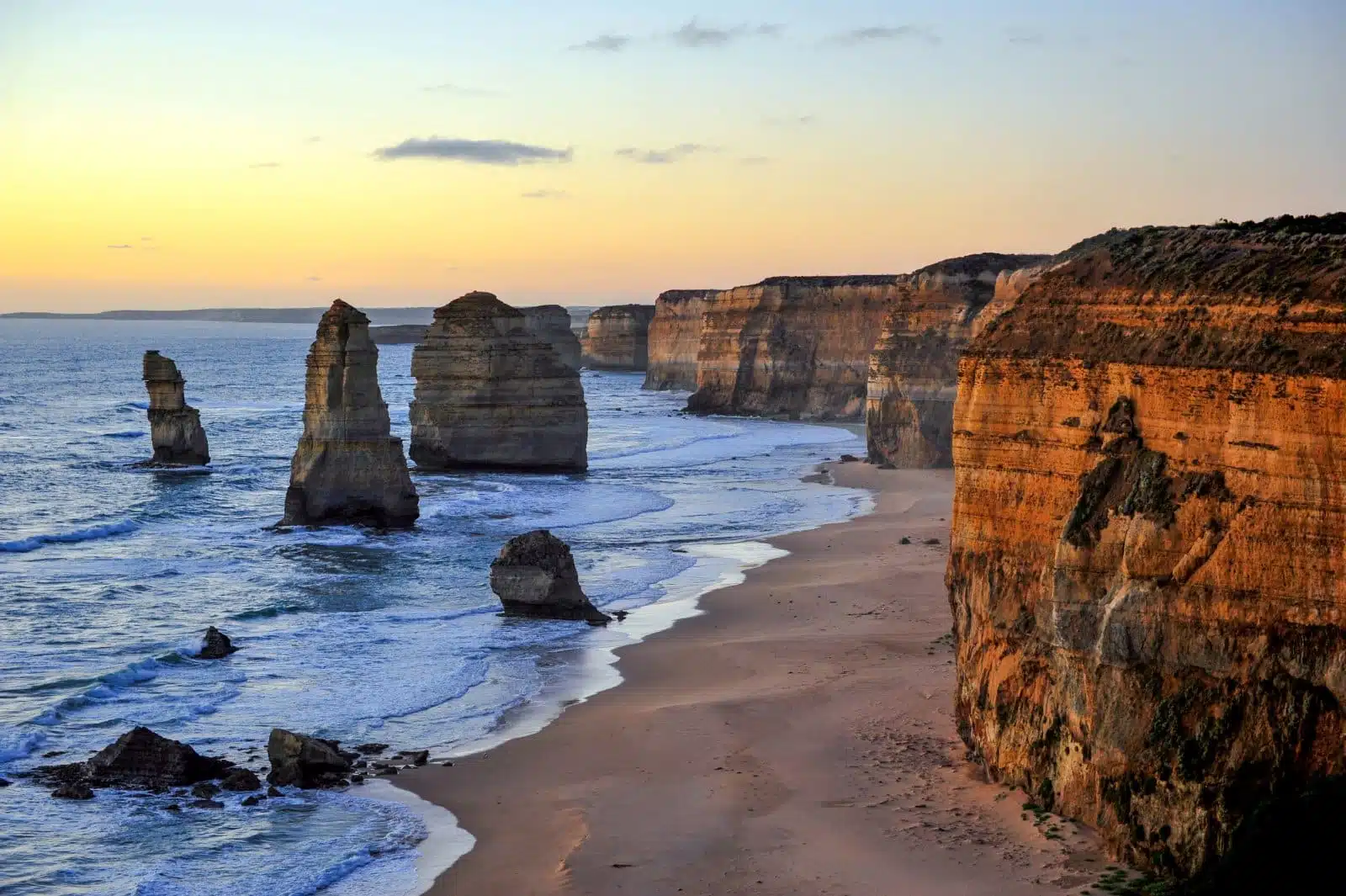
Image Credit: Shutterstock / Dmitriy Komarov
The Twelve Apostles, located along the Great Ocean Road in Victoria, is a collection of limestone stacks rising majestically from the Southern Ocean. Formed by erosion, these towering structures offer a dramatic landscape against the backdrop of the rugged Victorian coastline. The best views of the Twelve Apostles are from the viewing platforms at the Twelve Apostles Visitor Centre, especially at sunrise or sunset when the colors change dramatically. The Great Ocean Road is a scenic journey, with other highlights including Loch Ard Gorge and London Bridge.
Insider’s Tip
Take a helicopter tour for a unique perspective of the Apostles and the coastline.
When to Travel
December to February for warmer weather, though the site is spectacular year-round.
How to Get There
Drive from Melbourne along the Great Ocean Road.
Kangaroo Island, South Australia
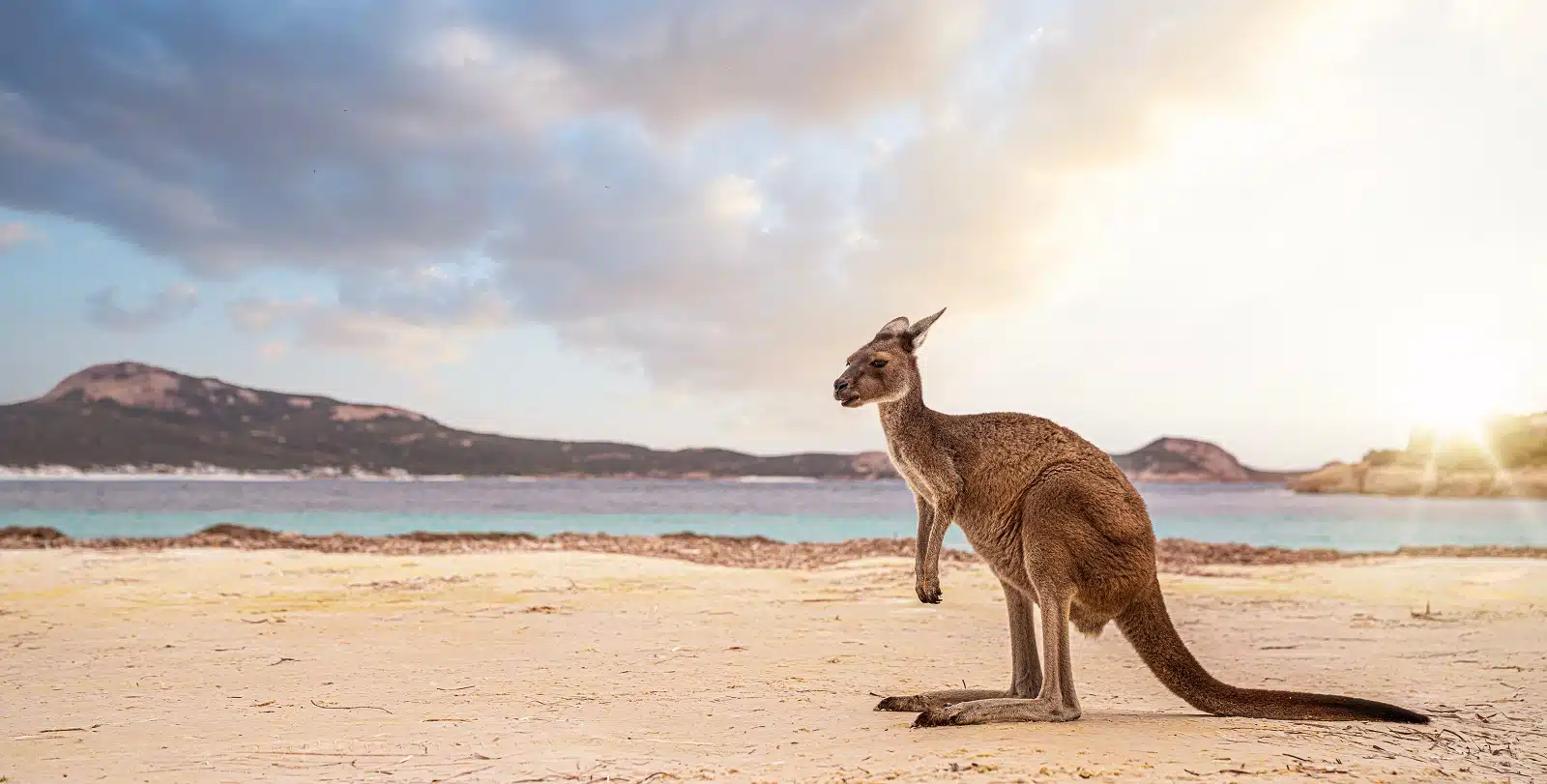
Image Credit: Shutterstock / anek.soowannaphoom
Kangaroo Island, off the coast of South Australia, is a wildlife sanctuary and a natural paradise. The island is home to a variety of wildlife, including kangaroos, koalas, echidnas, and a range of bird species. Natural attractions include the Remarkable Rocks, Admirals Arch, and Seal Bay Conservation Park, where visitors can observe a colony of Australian sea lions. The island also offers pristine beaches, local food and wine, and a tranquil atmosphere. Kangaroo Island is an ideal destination for wildlife enthusiasts and those seeking a peaceful retreat in nature.
Insider’s Tip
Join a guided nocturnal tour to see the island’s wildlife in its natural habitat.
When to Travel
December to February for beach weather, though wildlife viewing is excellent year-round.
How to Get There
Fly to Kingscote on Kangaroo Island or take a ferry from Cape Jervis.
The Blue Mountains, New South Wales
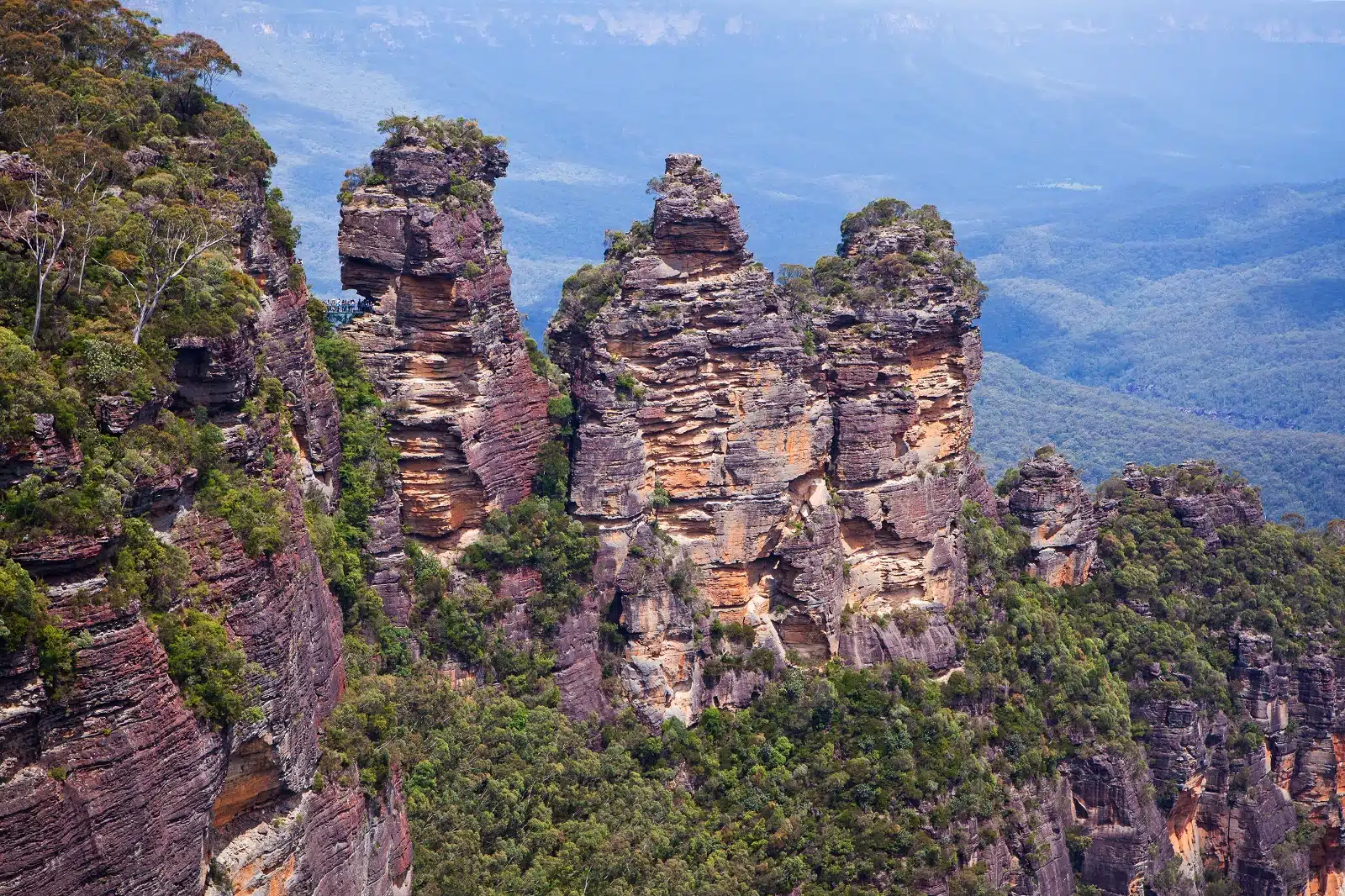
Image Credit: Shutterstock / CoolR
The Blue Mountains, located just west of Sydney, are known for their dramatic scenery, eucalyptus forests, and steep cliffs. The area is named for the blue haze emanating from the vast eucalyptus forests. Key attractions include the Three Sisters rock formation, the Jenolan Caves, and the Scenic World, offering cable car and railway rides with stunning views. The region is ideal for hiking, with numerous trails leading to waterfalls, valleys, and panoramic viewpoints. The Blue Mountains also offer charming towns, Aboriginal cultural experiences, and cozy accommodations.
Insider’s Tip
Visit the Jenolan Caves for a guided tour of one of the world’s oldest cave systems.
When to Travel
September to November for spring blooms and cooler hiking weather.
How to Get There
Drive or take a train from Sydney.
Freycinet National Park, Tasmania

Image Credit: Shutterstock / Atosan
Freycinet National Park on Tasmania’s east coast is famed for its dramatic pink granite peaks, secluded bays, and pristine beaches. The park’s most iconic feature is Wineglass Bay, a perfect crescent of white sand and turquoise water. Hiking opportunities abound, with trails leading to breathtaking lookouts and quiet coastal stretches. The park is also a haven for wildlife, including wallabies, Tasmanian devils, and a variety of bird species. Freycinet offers a blend of natural beauty, wildlife encounters, and outdoor adventure in a relatively compact area.
Insider’s Tip
Take a cruise or kayak tour for a different perspective of Wineglass Bay and the coastline.
When to Travel
December to February for the best beach weather.
How to Get There
Fly to Hobart and drive to Freycinet National Park.
The Whitsundays, Queensland
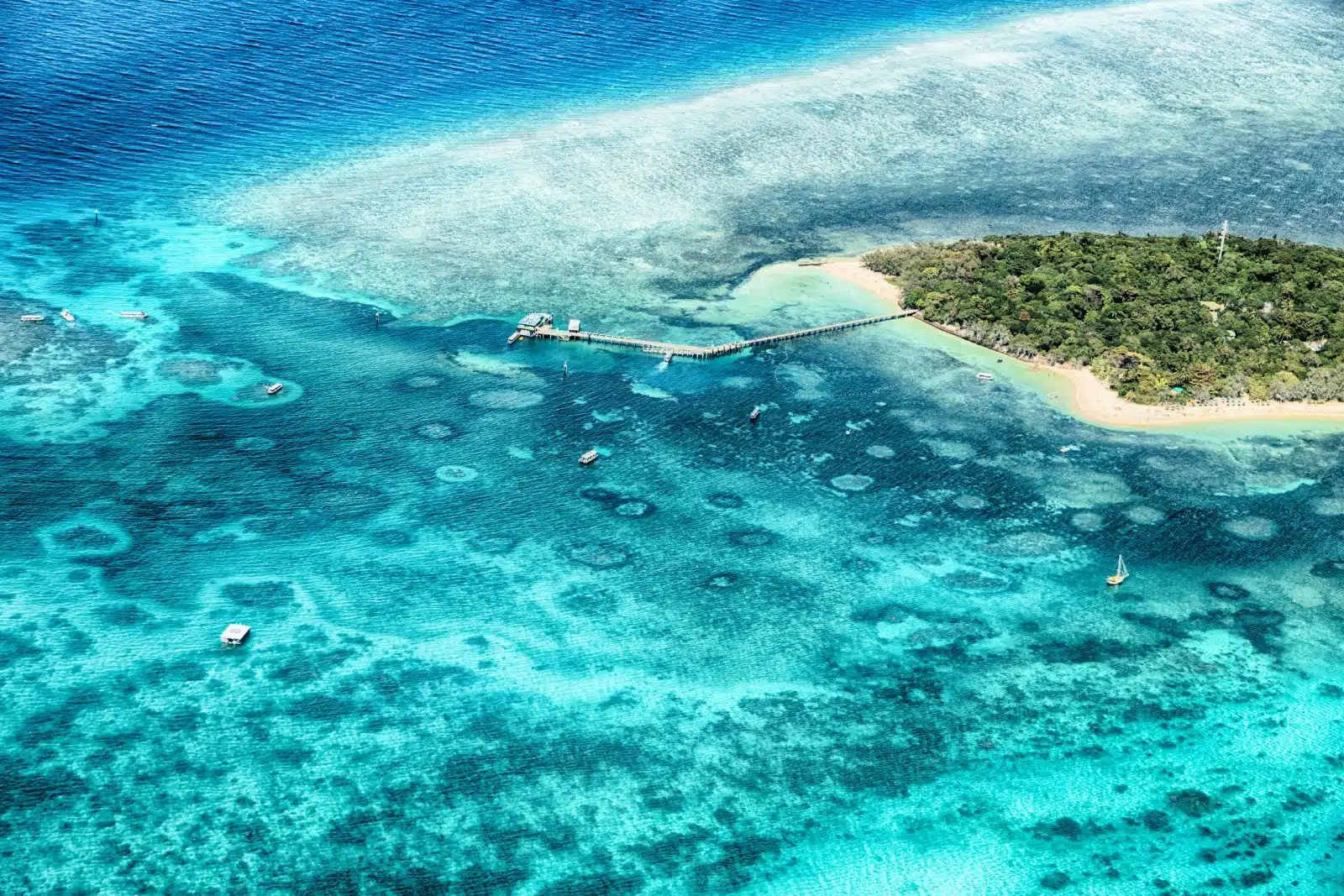
Image Credit: Shutterstock / lkpro
The Whitsundays, a group of 74 islands in the heart of the Great Barrier Reef, are a tropical paradise with some of the world’s most beautiful beaches. Whitehaven Beach is a highlight with its stunning white silica sand and crystal-clear waters. The islands offer a range of activities, including snorkeling, sailing, and exploring the reef. Accommodation options vary from luxury resorts to camping on uninhabited islands. The Whitsundays provide a quintessential Australian beach experience, combining natural beauty with a relaxed island atmosphere.
Insider’s Tip
Charter a sailboat for a personalized tour of the islands and secluded beaches.
When to Travel
May to September for cooler temperatures and less rainfall.
How to Get There
Fly to Hamilton Island or Airlie Beach and take a boat to the islands.
Cradle Mountain-Lake St Clair National Park, Tasmania
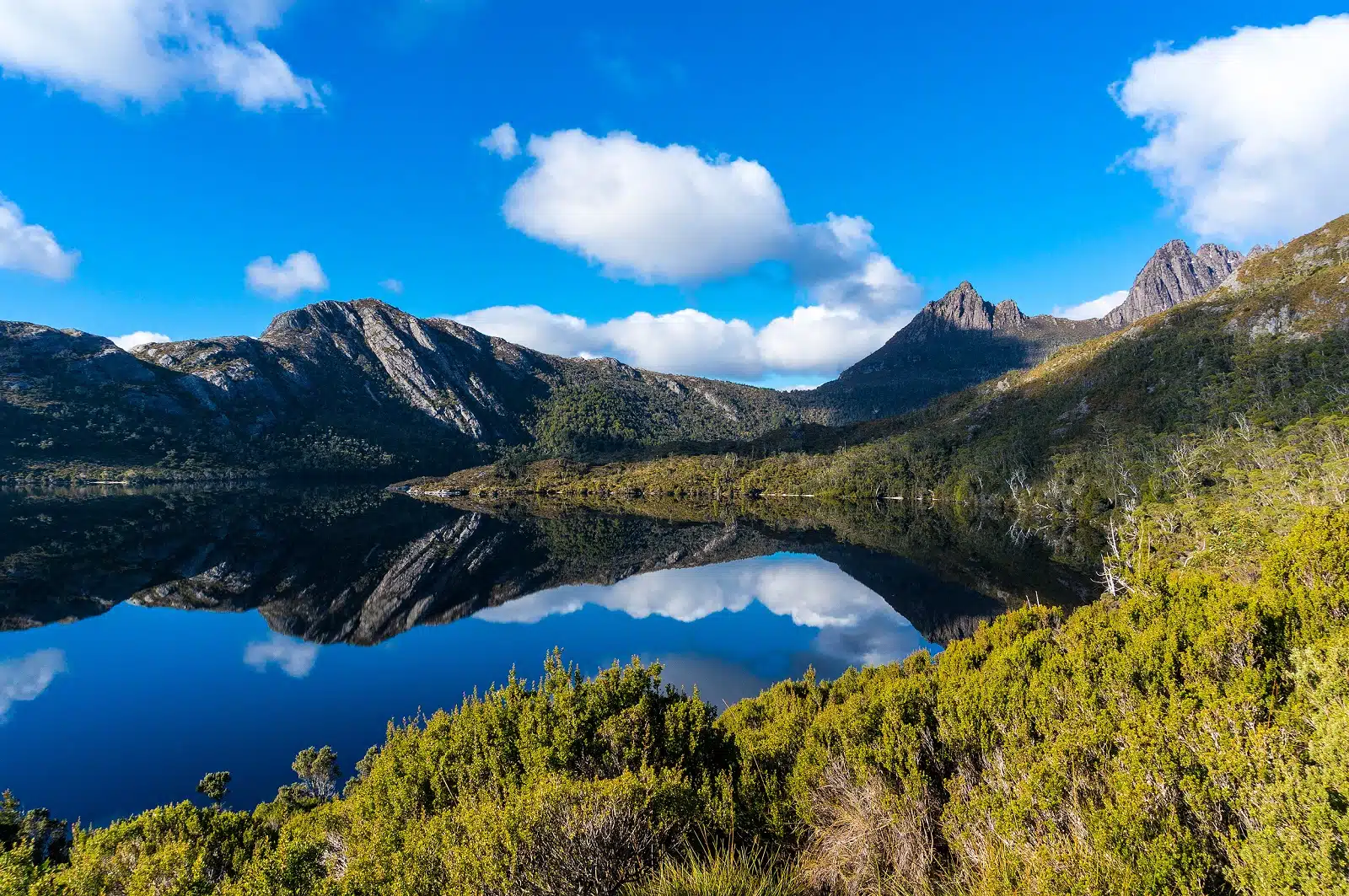
Image Credit: Shutterstock / Olga Kashubin
Cradle Mountain-Lake St Clair National Park in Tasmania is a wilderness area known for its rugged mountains, glacial lakes, and diverse ecosystems. The park is part of the Tasmanian Wilderness World Heritage Area. It offers some of the best alpine hiking in Australia. The famous Overland Track, a 65-kilometer trek, takes hikers through stunning landscapes, from the iconic Cradle Mountain to the serene Lake St Clair. The park’s diverse wildlife includes wombats, wallabies, and Tasmanian devils. Cradle Mountain-Lake St Clair is a destination for those seeking a challenging outdoor adventure in a pristine natural environment.
Insider’s Tip
Spend a night in one of the park’s huts or campsites for a complete wilderness experience.
When to Travel
November to April for the best hiking conditions.
How to Get There
Fly to Launceston or Hobart and drive to the national park.
Ningaloo Reef, Western Australia
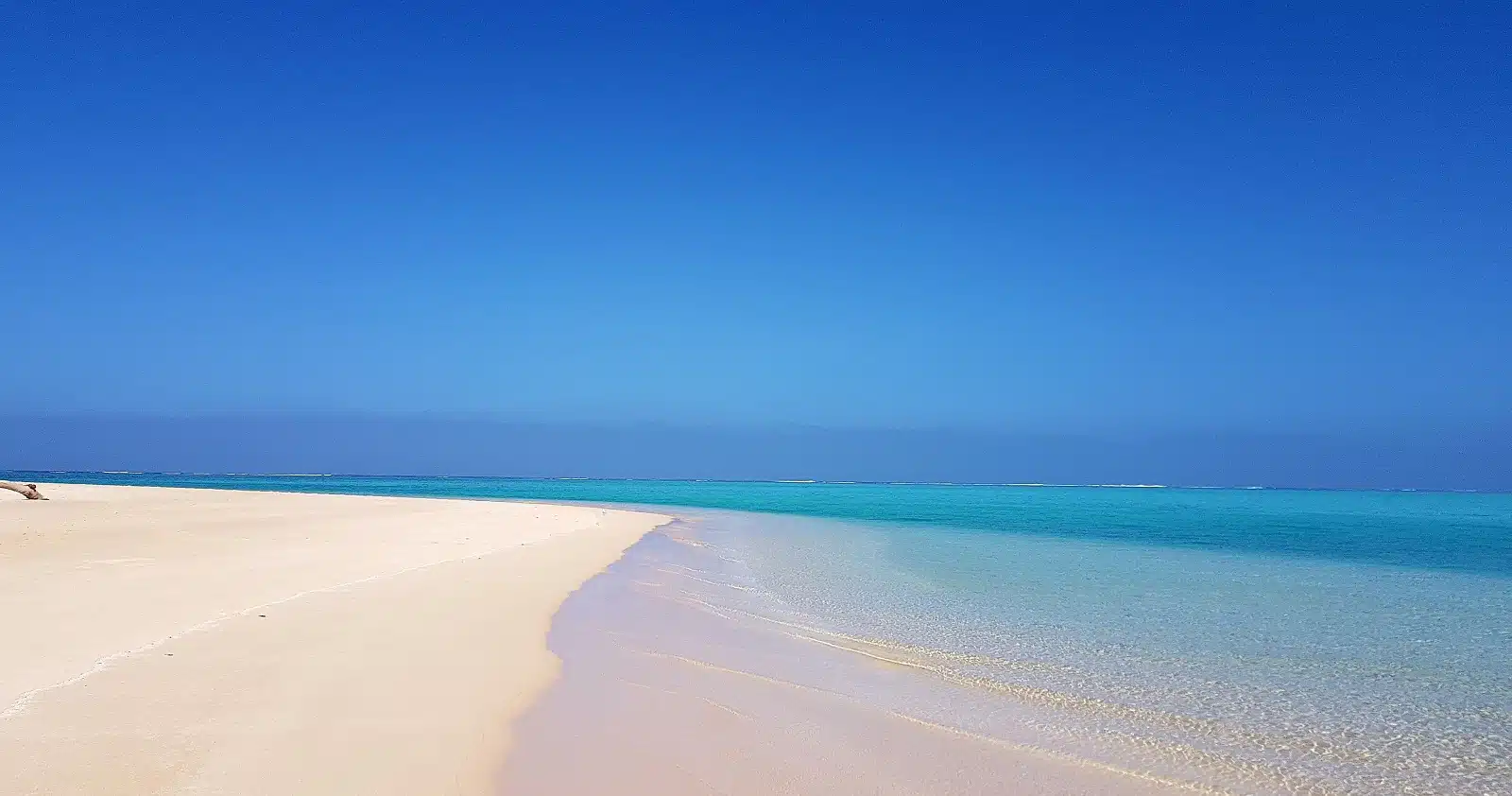
Image Credit: Shutterstock / Jude Glenn
Ningaloo Reef, a World Heritage-listed site on the west coast of Australia, is one of the world’s largest fringing reefs. This pristine reef is home to a diverse array of marine life, including whale sharks, manta rays, and hundreds of species of coral and fish. Unlike the Great Barrier Reef, Ningaloo is easily accessible from the shore, making it an ideal spot for snorkeling and diving. The reef is part of the Ningaloo Coast, including stunning beaches, rugged limestone ranges, and the Cape Range National Park. Visitors to Ningaloo can experience the thrill of swimming with whale sharks, exploring the reef’s underwater wonders, and enjoying the natural beauty of the Western Australian coast.
Insider’s Tip
Book a swim with whale sharks between March and July for a once-in-a-lifetime experience.
When to Travel
April to July for whale shark season; however, the reef is spectacular year-round.
How to Get There
Fly to Learmonth Airport near Exmouth and drive to Ningaloo Reef.
The Pinnacles, Western Australia
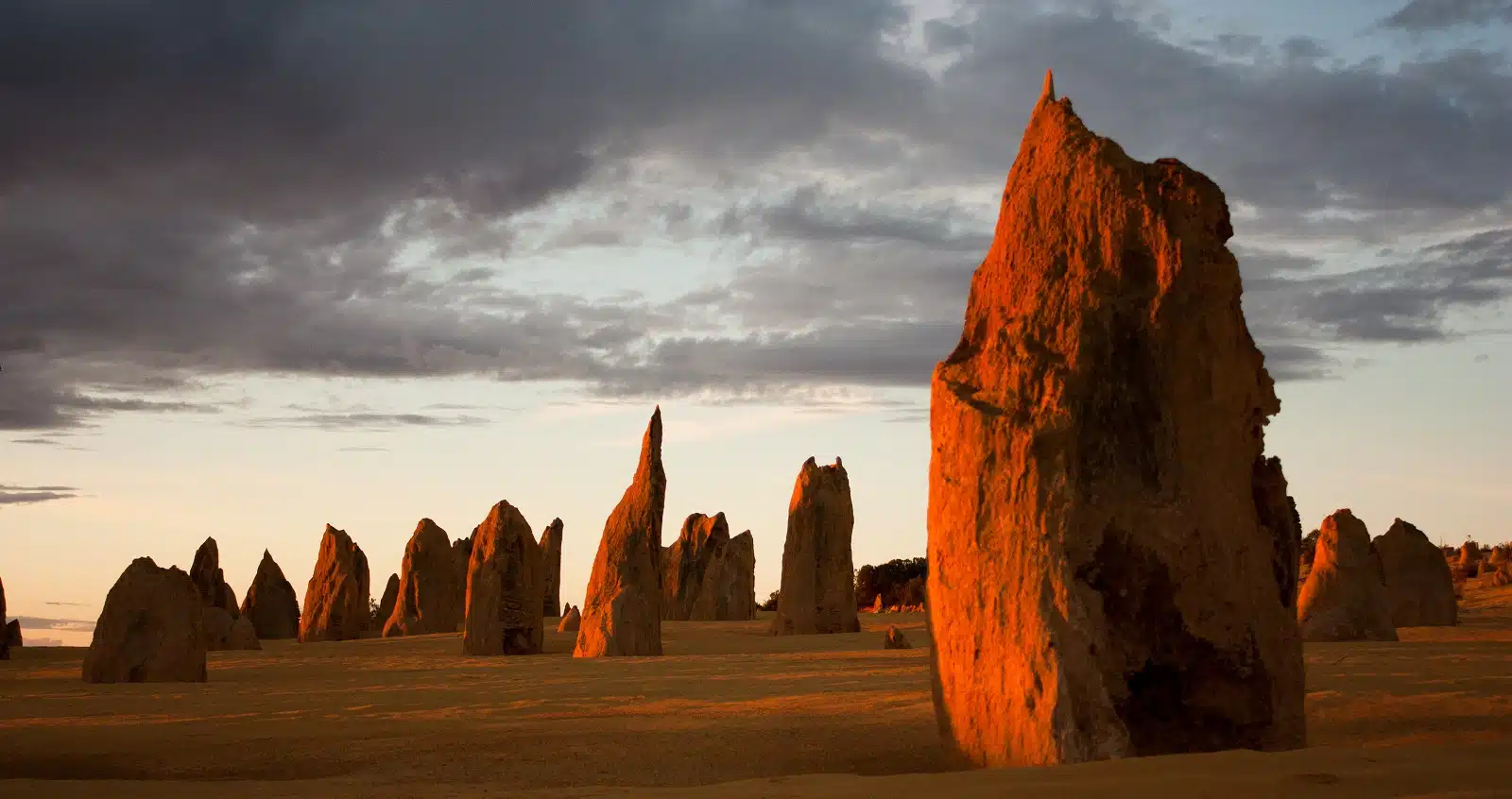
Image Credit: Shutterstock / Anna Morgan
The Pinnacles in Nambung National Park near Cervantes, Western Australia, are an intriguing natural formation of limestone pillars rising out of the sandy desert. The landscape here is otherworldly, with thousands of these unique structures dotting the landscape. The Pinnacles are particularly striking at sunrise or sunset when the light casts long shadows and enhances the colors of the formations. The park also offers beautiful beaches and opportunities to spot wildlife, including kangaroos and emus. A visit to the Pinnacles is a journey into one of Australia’s most unusual and photogenic landscapes.
Insider’s Tip
Visit during wildflower season (August to October) to see the desert bloom with color.
When to Travel
April to October for cooler temperatures and less chance of rain.
How to Get There
Drive from Perth to Nambung National Park.
The Grampians National Park, Victoria
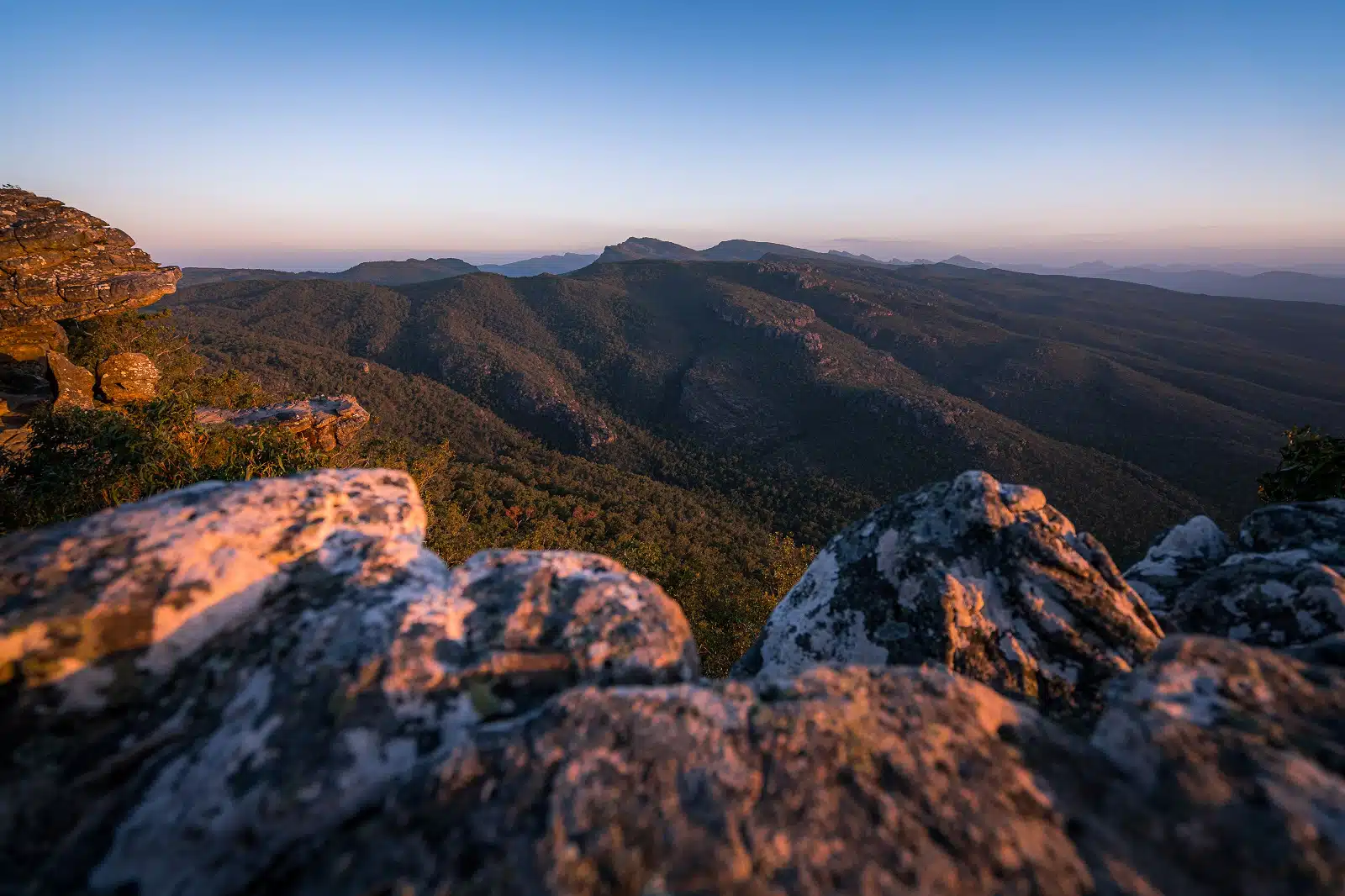
Image Credit: Shutterstock / David_Chrastek
The Grampians National Park in Victoria is known for its sandstone mountains, rich Aboriginal heritage, and diverse flora and fauna. The park offers a range of hiking trails, leading to stunning lookouts, waterfalls, and ancient rock art sites. The Grampians are also a haven for wildlife, including kangaroos, koalas, and various bird species. The park’s dramatic landscapes and cultural significance make it a rewarding destination for nature lovers and outdoor enthusiasts.
Insider’s Tip
Hike to the Pinnacle for panoramic views of the park’s rugged terrain.
When to Travel
March to May for mild weather and fewer crowds.
How to Get There
Drive from Melbourne or take a train to a nearby town and then a bus to the park.
Lord Howe Island, New South Wales
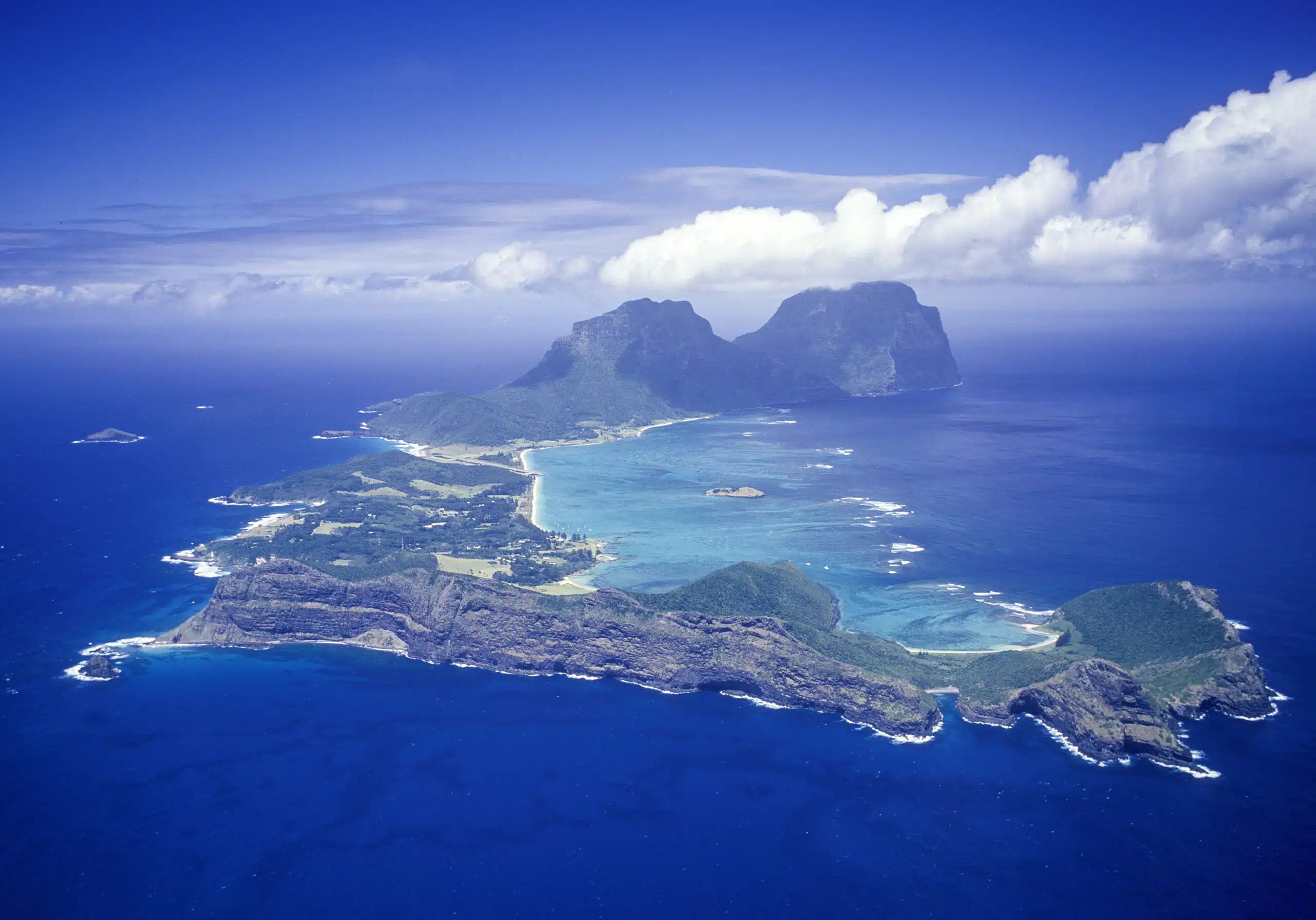
Image Credit: Shutterstock / John Carnemolla
Lord Howe Island, a UNESCO World Heritage-listed island in the Tasman Sea, is a paradise of untouched beaches, crystal-clear waters, and lush forests. The island is known for its unique biodiversity, with many endemic species of plants and birds. Activities include hiking, snorkeling, bird-watching, and relaxing on pristine beaches. The island’s coral reef, part of the world’s southernmost coral reef system, offers excellent snorkeling and diving opportunities. Lord Howe Island limits the number of visitors at any time, ensuring a peaceful and exclusive experience.
Insider’s Tip
Climb Mount Gower for a challenging hike with spectacular views.
When to Travel
September to May for the best weather and outdoor activities.
How to Get There
Fly to Lord Howe Island from Sydney or Brisbane.
Kakadu National Park, Northern Territory
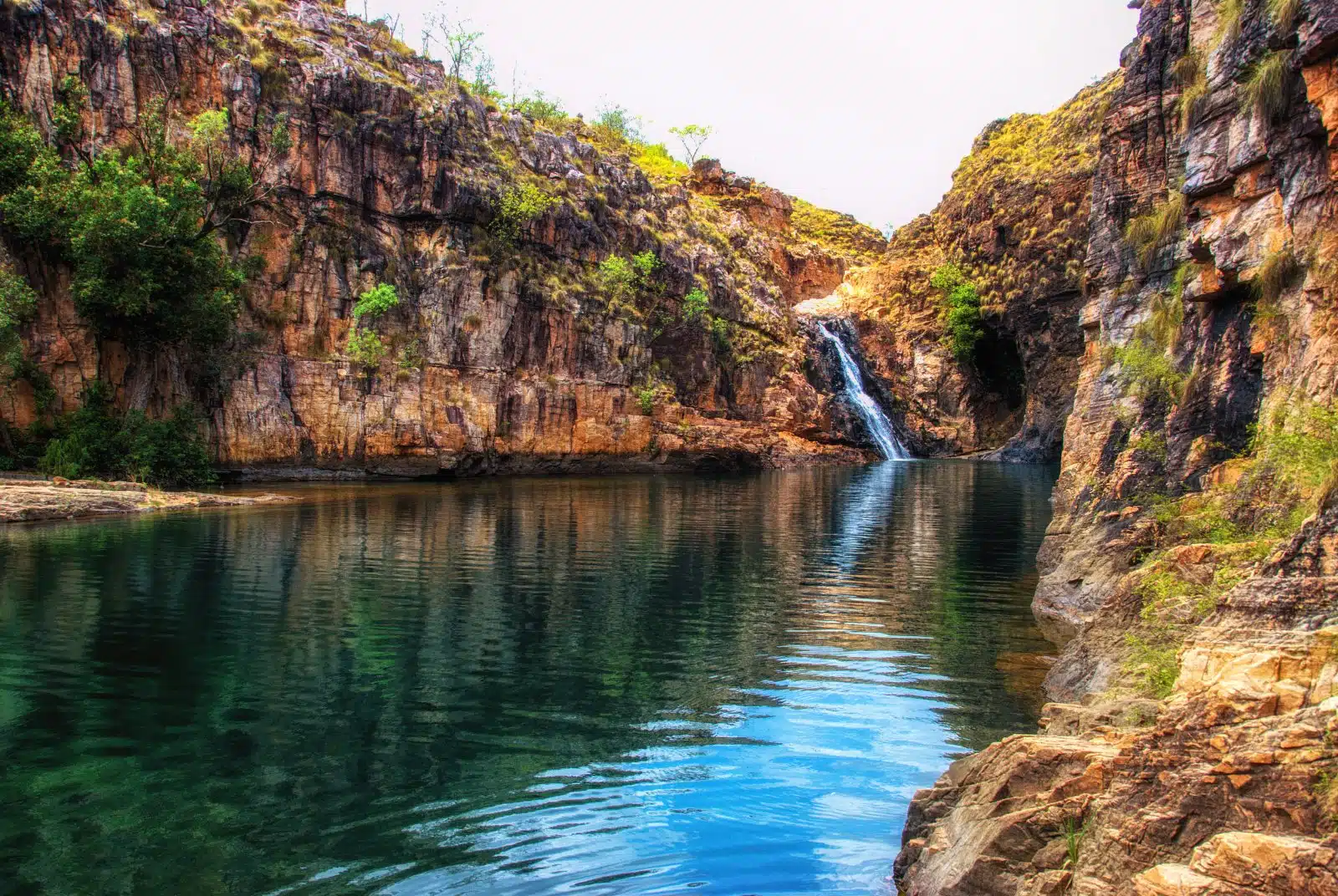
Image Credit: Shutterstock / Atosan
Kakadu National Park, Australia’s largest national park, is a vast area of diverse landscapes, including wetlands, rivers, sandstone escarpments, and ancient rock art sites. The park is a UNESCO World Heritage site for its natural and cultural values. Visitors can explore the park’s diverse ecosystems, home to a wide variety of wildlife, including saltwater crocodiles, water buffalo, and numerous bird species. The park’s Aboriginal rock art sites, such as Ubirr and Nourlangie, offer a glimpse into the region’s rich indigenous history and culture.
Insider’s Tip
Take a guided tour to learn about the park’s Aboriginal culture and history.
When to Travel
May to October for the dry season and easier access to attractions.
How to Get There
Fly to Darwin and drive or take a tour to Kakadu National Park.
The Bottom Line
Exploring Australia’s diverse landscapes is an adventure into some of the most spectacular and unique natural environments on the planet. From the underwater wonders of the Great Barrier Reef to the ancient rock formations of the Outback, each destination offers a chance to connect with nature and experience the vast beauty of the Australian continent. As you embark on this journey, remember to respect the natural environments and the cultural heritage of the places you visit. In the vastness of Australia’s landscapes, you’ll find not only breathtaking sights but also a deeper appreciation for the natural world.
More From The Green Voyage
12 Best Practices for Sustainable Travel in 2024 – How to Travel With Minimal Environmental Impact
Unlocking Hotel Perks – A Traveler’s Guide to Maximizing Hotel Reward Programs for Optimal Benefits
Travel Hacks for Frequent Flyers – 6 Tips and Tricks to Make the Best of Air Travel
The post Exploring 15 Diverse Landscapes of Australia 2024 first appeared on The Green Voyage.
Featured Image Credit: Shutterstock / Scott McManus.
For transparency, this content was partly developed with AI assistance and carefully curated by an experienced editor to be informative and ensure accuracy.
Tips for Trip Success
Book Your Flight
Find an inexpensive flight by using Kayak, a favorite of ours because it regularly returns less expensive flight options from a variety of airlines.
Book Your Hotel or Special Accommodation
We are big fans of Booking.com. We like their review system and photos. If we want to see more reviews and additional booking options, we go to Expedia.
You Need Travel Insurance!
Good travel insurance means having total peace of mind. Travel insurance protects you when your medical insurance often will not and better than what you get from your credit card. It will provide comprehensive coverage should you need medical treatment or return to the United States, compensation for trip interruption, baggage loss, and other situations.Find the Perfect Insurance Plan for Your Trip
